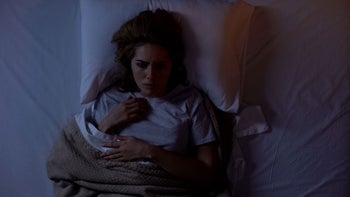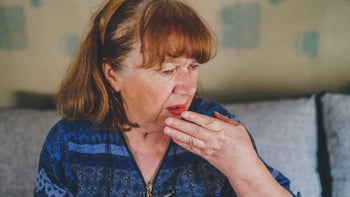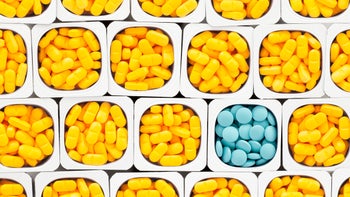
What Pharmacists Say About When to Take Zoloft (Plus 4 More Tips)
Key takeaways:
Zoloft (sertraline) is FDA-approved to treat depression and other mental health conditions.
Zoloft can be taken at any time of day, but you may find that a certain time works best for you. For example, if Zoloft makes you tired, you should take it in the evening before bed.
Zoloft has potential side effects and drug interactions to be aware of. Talk to your healthcare provider and pharmacist to see if any of your current medications interact with Zoloft.

Zoloft (sertraline) is a type of antidepressant medication. More specifically, it’s in a group of antidepressants called selective serotonin reuptake inhibitors (SSRIs). It’s a first-choice medication option for treating depression. It’s also a first-choice option for other mental health conditions, like obsessive-compulsive disorder (OCD) and panic disorder.
If you’ve been prescribed Zoloft, you may be wondering if there’s a best way to take it. In this article, we’ll discuss 5 tips to help you get the most out of your Zoloft prescription.
What is Zoloft?
Zoloft is FDA-approved to treat many mental health conditions. These include:
Depression
OCD (in adults and children who are at least 12 years old)
Panic disorder
Social anxiety disorder (SAD)
Zoloft is also used off-label for other medical conditions, including anxiety, bulimia nervosa, premature ejaculation, and others.
Zoloft comes in brand-name and generic forms. Brand-name Zoloft is available as tablets (25 mg, 50 mg, and 100 mg) and a liquid solution (20 mg per 1 mL). Generic sertraline is available as tablets and a liquid solution in the same dosages as the brand-name products. It also comes as a capsule (150 mg and 200 mg).
Zoloft is typically taken once a day. The starting dose is usually 50 mg daily for depression, and between 25 to 50 mg for other mental health conditions. If your dose isn’t working well for you, your healthcare provider may raise your dose by 25 to 50 mg on a weekly basis. The maximum dose is 200 mg per day (or between 100 and 150 mg per day for PMDD).
5 tips for taking Zoloft
You’ll want to keep a few things in mind if you have a prescription for Zoloft. Taking Zoloft correctly is important to minimize side effects and drug interactions.
1. What’s the best time of day to take Zoloft?
You can take Zoloft at any time of day. But while it can make some people tired, it makes other people feel more awake.
If you have trouble sleeping after starting Zoloft, try taking it in the morning. This makes it less likely that you’ll have trouble falling asleep.
But if you feel more awake after taking Zoloft, take it in the morning so you have less trouble sleeping.
2. Should I take my Zoloft with food?
Zoloft can be taken with or without food. But, taking it with food can help it be slightly better absorbed. A medication that’s well-absorbed has a better chance at working in the body. And, taking Zoloft with food may help prevent an upset stomach, which is one of the most common side effects of Zoloft.
If you’re using the Zoloft oral solution, dilute it in half a cup (4 ounces) of liquid before taking it. If you don't, it can cause numbness in your mouth and on your tongue for over 24 hours (even if you rinse your mouth after). Only certain beverages can be used to dilute the oral solution. These include:
Water
Ginger ale
Lemon or lime soda
Lemonade
Orange juice
3. Should I separate my Zoloft from other medications?
No, you don’t have to separate your Zoloft from other medications. Zoloft has some drug interactions to be aware of, but they are not related to when you take the medications. However, if you take another medication that your healthcare provider or pharmacist told you to separate from other medications, make sure to still keep that in mind.
These drug interactions can occur because another medication has one or more of the same side effects on the body that Zoloft does (more on this in tip No. 5). Make sure your healthcare provider and pharmacist know all the medications you take so they can check for drug interactions. Examples of medications that can interact with Zoloft include:
Medications that raise serotonin levels: Combined with SSRIs like Zoloft, these can lead to too much serotonin in the body (serotonin syndrome). Examples include other antidepressants like monoamine oxidase inhibitors (MAOIs) and tricyclic antidepressants. Other medications that can raise serotonin levels include pain medications like tramadol (Ultram) and nausea medications like ondansetron (Zofran).
Medications and substances that affect the brain: Combined with SSRIs like Zoloft, these can cause extreme drowsiness. These include benzodiazepines, alcohol, and opioids.
Medications that raise your risk of bleeding: Examples include nonsteroidal anti-inflammatory drugs (NSAIDs) like ibuprofen (Motrin, Advil) and anticoagulants like warfarin (Coumadin, Jantoven) and rivaroxaban (Xarelto).
Medications that can cause an abnormal heart rhythm: These include antipsychotics, macrolide antibiotics, and some antiarrhythmics like flecainide.
4. What happens if I miss my dose of Zoloft?
If you miss a dose of Zoloft, take it as soon as you remember. The exception to this rule is if it’s almost time for your next dose. In that case, you should wait until your next scheduled dose to take Zoloft (and skip your missed dose).
Never take two doses of Zoloft at the same time. This can be dangerous and raise your risk of side effects.
5. What can I do if I experience side effects from Zoloft?
Side effects are possible for anyone taking Zoloft. Potential side effects of Zoloft include:
Nausea
Diarrhea
Trouble sleeping
Dry mouth
Dizziness
Tiredness
Tremor
Upset stomach
Ejaculation problems
Excessive sweating
Agitation
Lowered appetite
Lowered sex drive
Constipation
Keep in mind that Zoloft affects everyone differently. You might experience some of these side effects, but it’s unlikely you’ll experience all of them.
If you have bothersome side effects after starting Zoloft, contact your healthcare provider. They may be able to lower your dose, or try another antidepressant altogether. They may even switch you to another SSRI. Just because one SSRI doesn’t work for you, that doesn’t mean another one won’t work.
Unfortunately, Zoloft can also have more serious risks and side effects. If you experience any of the severe side effects discussed below, contact your healthcare provider immediately:
Suicidal thoughts or behaviors, especially in people younger than 25
Serotonin syndrome
Discontinuation syndrome (symptoms of withdrawal) when stopping Zoloft
Abnormal bleeding which may include nosebleeds or bleeding of the gums
abnormal heart rhythm (symptoms include lightheadedness, fainting, and blurry vision)
Lowered sodium levels (serious symptoms include lethargy and confusion)
A type of glaucoma called angle-closure glaucoma
Periods of intense energy (manic episodes) in people with bipolar disorder
How to save money with your Zoloft prescription
There are many ways to save on Zoloft, which is available as both a brand-name and generic medication.
Save with GoodRx. GoodRx can help you save over 55% off the average retail price of the generic version. Generic sertraline’s price at certain pharmacies is less than $22 with a free GoodRx discount.
Save with patient assistance programs. If you’re uninsured or underinsured, you may be eligible for Zoloft’s patient assistance program, which offers the medication free of cost.
Save with a copay savings card. If you have commercial insurance, you may be eligible to pay as little as $4 for Zoloft using a savings card from the manufacturer.
The bottom line
Zoloft is an SSRI that treats depression and other mental health conditions. It’s usually taken once a day at any time during the day. But if it makes you tired, take it in the evening. If it makes you feel more awake, take it in the morning. Taking it with food may help it be better absorbed and prevent nausea.
Like most medications, Zoloft can have side effects and drug interactions. Be sure to give your healthcare provider or pharmacist a list of all the medications you take, so they can check for drug interactions.
Why trust our experts?



If you or someone you know has had thoughts of harming themselves or taking their own life, know that help is available. The National Suicide Prevention Lifeline (1-800-273-8255) provides 24/7, free, confidential support for people in distress, as well as best practices for professionals and resources to aid in prevention and crises.
References
Almatica Pharma LLC. (2021). Sertraline hydrochloride capsules [package insert].
American Psychological Association. (2019). APA clinical practice guideline for the treatment of depression across three age cohorts.
Greenstone LLC. (2022). Sertraline hydrochloride solution and tablet [package insert].
National Suicide Prevention Lifeline. (n.d.). National suicide prevention lifeline.
NorthStarRx LLC. (2021). Sertraline hydrochloride tablet, film coated [package insert].
RemedyRepack. (2022). Sertraline hydrochloride tablet [package insert].
Rodriguez, C., et al. (2015). Clinical practice review for OCD. Anxiety & Depression Association of America.
Singh, H. K., et al. (2022). Sertraline. StatPearls.
Stein, M. B., et al. (2009). Practice guideline for the treatment of patients with panic disorder second edition. American Psychiatric Association.
Was this page helpful?
Related Articles
Browse medications
View AllResearch prescriptions and over-the-counter medications from A to Z, compare drug prices, and start saving.




























